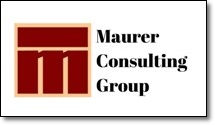What marketing strategies does your small business use to drive traffic to your website? You spend time and money on the #1 piece in your marketing toolbox: a website to attract consumers. That critical piece in any small business marketing plan should tell visitors everything they need to know about your company to make a  decision to buy from or work with you. Your site must convey strong marketing content that tells prospects who you are, what you do and why what you offer, or your solutions, are superior to other competing companies.
decision to buy from or work with you. Your site must convey strong marketing content that tells prospects who you are, what you do and why what you offer, or your solutions, are superior to other competing companies.
Developing a powerful website take more than just doing a bit of cutting and pasting, dragging and dropping. The success of your site depends on the strategies you put behind the design and development. There are a number of ‘standards’ when you build a site: a Home or landing page, a Products or Services (or Portfolio) page, an About page and a Contact page are the bare minimums. Including those pages is just the beginning, though. What goes on those pages has to be well thought out with goals set. These parts of your planning system are far more important than including the basic pages on your navigation bar.
How to drive traffic to your website
Once your site is completed and launched, you think you can check that item off your ‘Important Things to Do’ list. Well, I guess at least getting it done and launched completes a milestone – but only ONE milestone. How do plan to get people to find your site and devour all the content you put there? Ha! See, it wasn’t all that simple. You are still at the very beginning of your website strategy. “I have a site, now how do I get people to it?”
You now need strategies to drive traffic your way. That is the most important strategy in this process: help customers find you. There are a number of ways you might get people to your site. Passing out pens or keychains with your contact information and website address printed on them is one way. Sharing your website URL (address) through social media sites is another. Including your web address on business cards, letterhead, invoices and all those myriad peripheral marketing pieces your business uses.
Get the word out to attract visitors to your website
 But, before settling on one of those basic, relatively inexpensive ways mentioned above, think about who will not have access to those particular sources. Anyone you are not linked to on social media platforms won’t see it. Anyone not already a customer won’t see it on your business cards and other paperwork that goes out to customers either. Are those pens, keychains or other giveaways going to prospects – potential new customers? Or, are you handing them out to your family, friends, colleagues and ‘already’ customers. These strategies are all basically focusing on spreading your brand, but to a very limited audience
But, before settling on one of those basic, relatively inexpensive ways mentioned above, think about who will not have access to those particular sources. Anyone you are not linked to on social media platforms won’t see it. Anyone not already a customer won’t see it on your business cards and other paperwork that goes out to customers either. Are those pens, keychains or other giveaways going to prospects – potential new customers? Or, are you handing them out to your family, friends, colleagues and ‘already’ customers. These strategies are all basically focusing on spreading your brand, but to a very limited audience
Then, there is the whole Search Engine Optimization (SEO) strategic approach, which is an enormous topic of its own. We have covered that topic before, so no need to waste your time with it again. You can find our previous guide to basics of SEO here. You might also find the article on the importance of SEO for your business helpful.
5 Big Strategies to Drive Traffic to Your Website
Give customers on your list another chance to visit your website.
You should be following visitors to your site through an analytics program like Google Analytics. If you are, you can see how many people received your latest communication, opened it and clicked on any links in that message. How about having a second go at letting those in your database get the message? Maybe they were busy, maybe they were out of town. Send a second email message with a different subject line out to those on your list who didn’t open the first one. Most email service providers (ESP) provide filters that let you sort out who ‘opened’ and who didn’t. After a week or so, give them a second try.
Give customers the first shot at seeing your newest information.
Whether you have a new blog post, new products or services, or a special offer, let your customers (and database members) know about it first. Don’t hope they will find it with everyone else on Facebook or Twitter or LinkedIn. They are important – show them you understand. This plays a big part in that Know-Like-Trust factor of building customer relationships. It’s like an advance peek or discount before others get to know about it.
Make it easy for people to share and drive traffic to your site
A-u-t-o-m-a-t-e. I know, it’s not the first time this word has been used in some of our ‘Designing Strategies’ e-Newsletter and blog posts. Yes, it is an awesome way to save time, improve efficiency and productivity. It is also a way to get your website in front of new people you might otherwise never meet or come in contact with.
Let’s talk about a few simple, free or inexpensive ways you can implement this strategy. Depending on what platform your website was built on, these options may or may not be available. But, check them out anyway.
Install Share apps in your website and blog
These apps can be placed in various locations on your website pages: header, footer, left side, right side, at the beginning of a page/post or the end. Some even ‘travel’ down as visitors/readers scroll down the page. They offer a number of options for sharing: social media sites and personal email messages to specific people. Add a ‘quotation’ using a ‘Click and Tweet’ app that allows you to select and highlight important pieces of your posts. This allows readers to 1) post something on their own Twitter feeds and 2) allows their contacts to see something of interest. Those links can drive new prospects to your website to learn more about you.
Repurpose your content to drive more traffic to your site
Creating quality content for your website/blog takes a lot of work, and time that could be spent in other ways. For this reason, an excellent strategy for driving traffic your way is to repurpose what you create. Repurpose: what does that mean? Write once, use the same content in various ways.
Let’s say you put time and effort into creating a highly useful post aimed at your target audience. Maybe you are wrapping a message around a current trend in your industry and how it can affect your customers. After devoting a lot of time to the piece, why just post it once and hope for the best? If it was a written blog post, think about creating a video of it to post on YouTube or another video site. Maybe your article/post included tips. If there are five, ten or twenty tips, divide those up and create short videos covering that same content.
Or expand the article (or a part of it) into an downloadable e-book, guide or report. These are hot items used for lead generation. Tell the world (via your contacts, social media, even a few advertisements) about this great piece of free content available – on your website.
Time to track and analyze website activity
 If you aren’t already tracking the success – or areas that need improvement – of your small business website, it’s past time to start. Sign up for one of the analytics programs like Google Analytics. This one is not the only web analytics tool available by any means. Here is a list of 25 more website analytics tools from Leadfeeder that you can consider to meet your specific needs and skill level.
If you aren’t already tracking the success – or areas that need improvement – of your small business website, it’s past time to start. Sign up for one of the analytics programs like Google Analytics. This one is not the only web analytics tool available by any means. Here is a list of 25 more website analytics tools from Leadfeeder that you can consider to meet your specific needs and skill level.
If you find your website is not what you expected, it may be time for some updates or a total do-over. Check the data analytics, find out what is and isn’t working, then get back to the planning board. The time you spend defining what you expect to get from your website is well worth the time and effort. If it is beyond your scope of skills, bring in some help for that planning stage. The ability to build a site is one thing, but only one of several steps to assure your site is able to do what you want.






